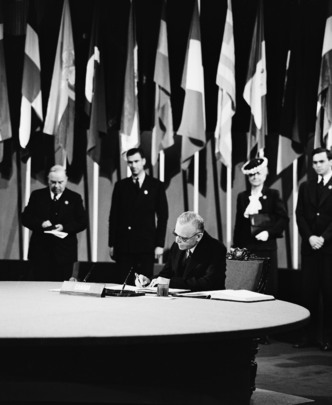On September 10, 2008, M---D.S. and M.---L. S. appeared before His Honour Judge Weisman for their preliminary hearing on charges arising out of historical sexual assault allegations. The victim, N. S., was a child at the time, when, according to her allegation, her uncle and her cousin sexually assaulted her. Although she complained of the assaults at the time, her father did not want the matter to be further investigated.
It was only as a mature adult, married and with children of her own, did N. S. reinstate the allegation and charges were subsequently laid. The allegations were such that the primary evidence against the two accused was from the alleged victim, making credibility the main determining factor in the case.
Unfortunately, this kind of situation, involving historical sexual assault allegations involving family members, is not unusual. What did make this case unusual was the manner in which the witness N. S. was dressed when she attended court to give evidence. As a practicing Moslem, N. S. was wearing a full body covering, known as an hijab, with a face covering veil, called a niqab, which showed only her eyes.
Defence counsel objected to her garb and requested the judge order the removal of the veil in order to conduct face-to-face cross examination. Judge Weisman, in open court, without conducting a formal hearing in which N.S. would have testified under oath and be subject to cross examination, questioned N. S. on her reason for wearing the veil. N. S. confirmed wearing the veil for religious reasons of modesty and only disrobing for family members. Another reason she did not wish to unveil herself was that:
--- the accuseds in this case are from the same community, they all go to the same place of worship as my husband as well and I have had this veil on for about five years now and it is --my face does not make any special, you know, like I know that--you know, there's body language, there's eye contact. I mean, I can look directly at the defence counsel, that is not a problem...it is a part of me and showing my face to--and it is also about--the religious reason is not to show your face to men that you are able to marry. It is to conceal the beauty of a woman, and you know, we are in a courtroom full of men and one of the accused is not a direct family member. The other accused is a direct family member and I, you know, I would feel a lot more comfortable if I didn't have to, you know, reveal my face. You know, just considering the nature of the case and the nature of the allegations and I think, you know, my face is not going to show any signs of--it is not going to help, it really won't.
N. S. was, however, unveiled for a driver's licence photograph, but a female photographer took the image while N. S. was behind a screen.
Judge Weisman ordered N. S. to remove her veil for her testimony. The decision was quashed upon judicial review by Justice Morrocco, but an application to permit N. S. to wear her veil during testimony was refused. This decision was appealed to the Ontario Court of Appeal, where, in a well written and reasoned decision, Justice Doherty, speaking for the panel, upheld Justice Morrocco's decision and remitted the matter to the preliminary hearing Judge to make the final determination on whether or not N. S. could testify behind the veil.
In another posting, I will discuss the reasoning for these decisions, but today I would like to point out the significance of the information given by N. S. at the time she was questioned by the Court, albeit in a less than procedurally satisfactory situation.
It appears, there are, in actuality, two issues to determine: the wearing of the veil for religious reasons and the wearing of the veil in order to provide comfort and privacy.
One issue, the wearing of the veil in accordance with Moslem modesty laws and tradition, is an issue of religious freedom under s.2(a) of the Charter. In this instance, this right comes into direct conflict with the accused's right to face his or her accuser for full answer and defence of the charges and is a protected principle of fundamental justice under s.7 of the Charter.
The other issue, of comfort and privacy, engages N.S.'s right to protect her personal integrity and self-identity during the criminal process. Thus, society's interest in protecting trial fairness and in encouraging reporting by victim's of abuse is engaged as well.
This delineation of the two issues is important as the final determination must take both concerns into account. Indeed, there are already provisions in our laws, specifically in the Criminal Code, to provide a more comfortable experience for a witness. One way this can be done is by permitting the witness to testify behind a privacy screen according to s.486.2(2), if "necessary to obtain a full and candid account from the witness." If so ordered, only the Judge and the lawyer conducting the examination can view the witness. Such an order strikes the right balance: as witness privacy rights are preserved and the trier of fact is able to assess demeanour and credibility. The constitutionality of this procedure was upheld by the Supreme Court of Canada in the Levogiannis case.
The other issue at stake, involving the freedom of religion and the competing interest of an accused's fair trial rights, must be assessed on a different basis. It is this clash of ideals which is at the heart of the N. S. appeal recently heard before the Supreme Court of Canada, and which will be further discussed in another posting. But here too, I suggest, there is an opportunity to strike a balance and come to an accommodation which preserves the rights of all.
 Lisa A. Silver
Lisa A. Silver
